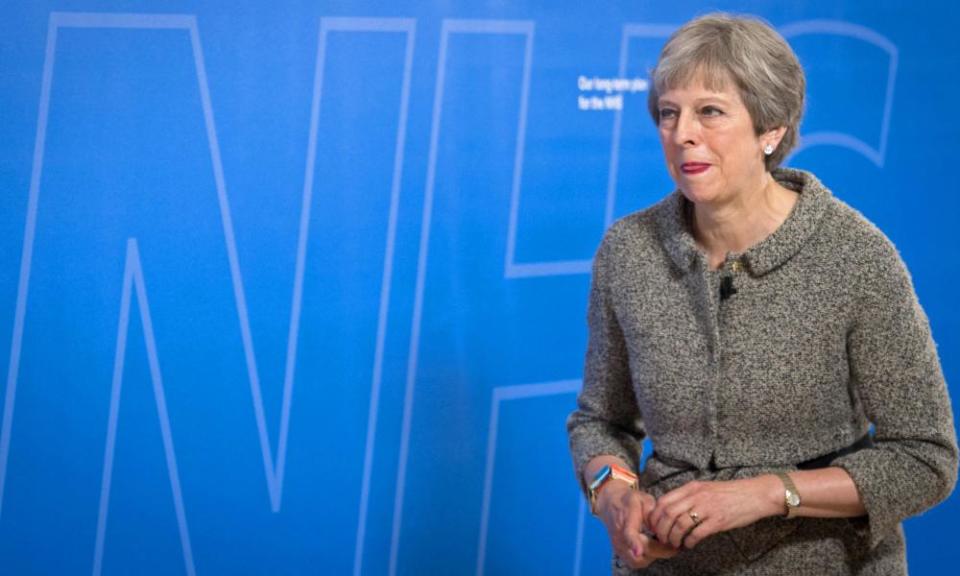NHS Brexit dividend: questions posed by Theresa May's pledge

Theresa May’s pledge to spend an extra £20bn a year on the NHS by 2023-24 has left the government struggling to explain how the health service’s 70th “birthday present” will be funded. A number of questions arise from the announcement.
1) How much will a Brexit dividend contribute?
In theory, diverting money that goes to the EU for the NHS could pay for almost half the extra cash. That is because the UK’s net contributions to the EU are in the region of £9bn a year. In practice, the prime minister cannot rely on the Brexit dividend. There are three reasons for that. First, the government has already earmarked the Brexit dividend for other purposes – to match the financial support given at the moment by Brussels to farmers and science, for example. Second, the UK has agreed to pay the EU a divorce settlement, which the Office for Budget Responsibility estimates will be £37bn. Finally, slower growth may result in weaker tax receipts. There is much debate about the impact of Brexit on the economy but the OBR’s view – accepted by the Treasury – is that the public finances will be weakened by £15bn a year.
2) How will the pledge affect the government’s deficit targets?
Extra borrowing is likely to account for up to £10bn of the additional health spending, which will further delay the government’s aim of putting the public finances back in the black. The Treasury’s fiscal rules say the UK should be in budget surplus by the middle of the next decade, described by the OBR as “challenging” even before the NHS announcement. Faster growth will be needed if the target is to be met.
3) Are further spending cuts an option?
Not really. The NHS and overseas aid budgets have been ringfenced since 2010 but other Whitehall departments have experienced deep cuts in their budgets, amounting to up to 40% in real terms for justice and work and pensions in the decade to 2020. Many parts of the public sector are struggling to cope with a prolonged period of austerity and £12bn is already being taken out of the annual welfare bill. Paul Johnson, the director of the Institute for Fiscal Studies, says the pressures on public services are “undeniable” and will need to be addressed. That means spending in areas other than health is likely to go up rather than down.
4) Theresa May says we will have to “contribute a bit more” but will taxes have to rise significantly?
It is not a question of whether taxes will go up in the autumn budget to pay for the NHS spending boost but by how much. Philip Hammond is considering all options, including deferring cuts in corporation tax (which would raise just over £5bn according to the IFS) and freezing income tax and national insurance thresholds (£3.5bn). The chancellor has doubts about an increase in national insurance contributions that would be earmarked exclusively for the NHS.
5) Is £20bn extra per year enough?
Almost certainly not. Since the NHS was set up in 1948 its annual budget has increased by 3.7% a year once inflation has been taken into account. May’s pledge would result in day-to-day health spending rising by 3.3% a year, enough to keep health provision at current levels but not enough to cope with the demands of an ageing population.

 Yahoo Finance
Yahoo Finance 